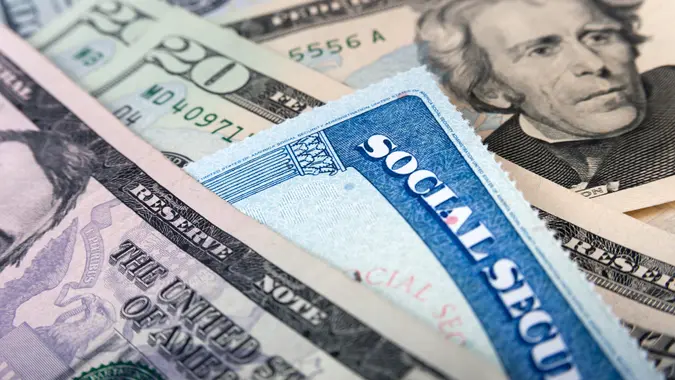Saving for Retirement Could Get Easier Thanks to These SECURE 2.0 Act Amendments

Commitment to Our Readers
GOBankingRates' editorial team is committed to bringing you unbiased reviews and information. We use data-driven methodologies to evaluate financial products and services - our reviews and ratings are not influenced by advertisers. You can read more about our editorial guidelines and our products and services review methodology.

20 Years
Helping You Live Richer

Reviewed
by Experts

Trusted by
Millions of Readers
The SECURE 2.0 Act passed at the end of 2022. The act promises to make saving for retirement easier, with some provisions in effect now — and many others being rolled out over the next decade. It may be prudent to look at some amendments that could change your retirement planning for the better over the next few years.
2024: Catch Up Quicker
If you are age 50 or older, the government allows a “catch-up” contribution beyond the maximum contribution limit of your 401(k), 403(b) and several other retirement plans. The catch-up contribution limit increased this year, from $6,500 in 2022 to $7,500 in 2023.
Beginning in 2024, the limit will be adjusted each year to keep up with inflation. In 2025, employees aged 60 to 63 will be able to contribute an additional $10,000 (or 150%) of the standard catch-up contribution for 2024, whichever amount is larger. That $10,000 will also be adjusted for inflation each year, beginning in 2026.
For workers aged 50-plus with a Roth IRA, the current catch-up contribution of $1,000 will also be adjusted for inflation annually starting in 2024. However, the amount will be rounded down to a multiple of $100, which means maximum contributions may not rise immediately or change annually.
2024: Pay Your Student Loan, Get Free Money for Retirement
Starting in 2024, employers will be allowed to make matching contributions to workers’ 401(k) retirement accounts based on an employee’s student loan payments. This can help workers struggling with student loan debt solve the tricky dilemma of choosing between paying off their student loans or saving for retirement.
2025: Do Nothing and Still Contribute to Your Retirement
Beginning in 2025, employers will be required to automatically enroll employees in workplace retirement plans with a contribution of at least 3%, but not more than 10%, of their gross pay.
That contribution rate will increase by 1% each year until it reaches at least 10%, but not more than 15%.
Studies show that automatic enrollment increases 401(k) and 403(b) participation. But you don’t have to wait until 2025. If you are a W-2 employee, speak to your HR department today to jumpstart your retirement savings.
2027: Look Forward to Boosting Your Retirement (In Lieu of a Tax Refund)
If you typically receive a tax refund for contributing to your retirement account, it may be a good idea to shuffle those funds into your 401(k) or 403(b). However, it can be tempting to spend the money on something else, instead — whether that’s a family vacation, home improvements, or even paying down debt.
Beginning in 2027, the federal government will automatically deposit your Saver’s Tax Credit funds into an eligible retirement account. The new program is called Saver’s Match and puts 50% of your retirement contributions, up to $2,000, into your retirement fund. Higher earners may not be able to claim the full amount.
2033: Wait to Take Required Minimum Distributions
The year 2033 may seem like a lifetime away, but if you’re planning for retirement now, you’ll want to be aware of this provision in the SECURE 2.0 Act. Beginning in 2033, you won’t have to withdraw required minimum distributions (RMDs) from your retirement accounts unless you are age 75 or older. Roth IRAs will not have any RMDs, beginning in 2024.
 Written by
Written by  Edited by
Edited by 

























